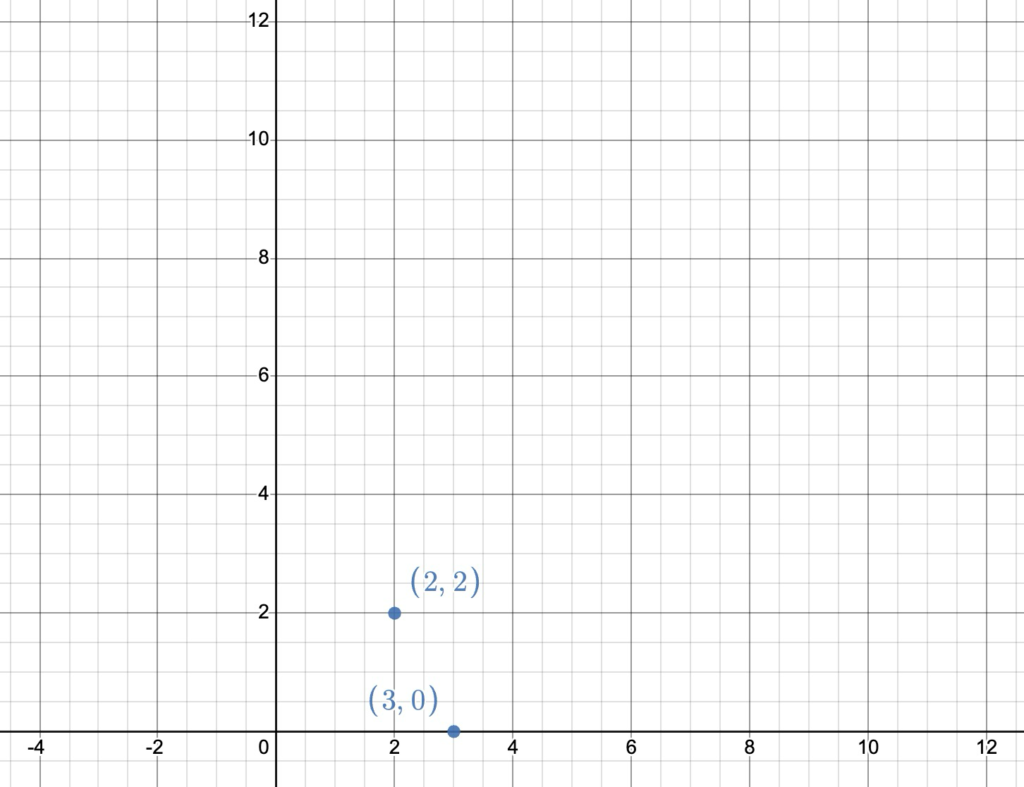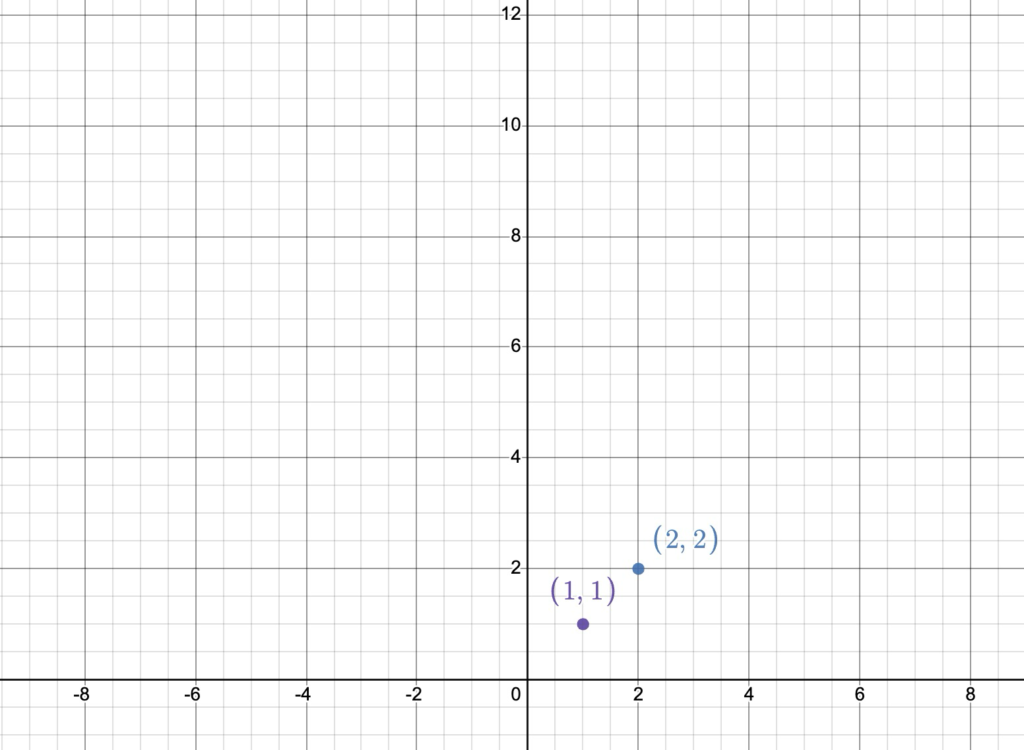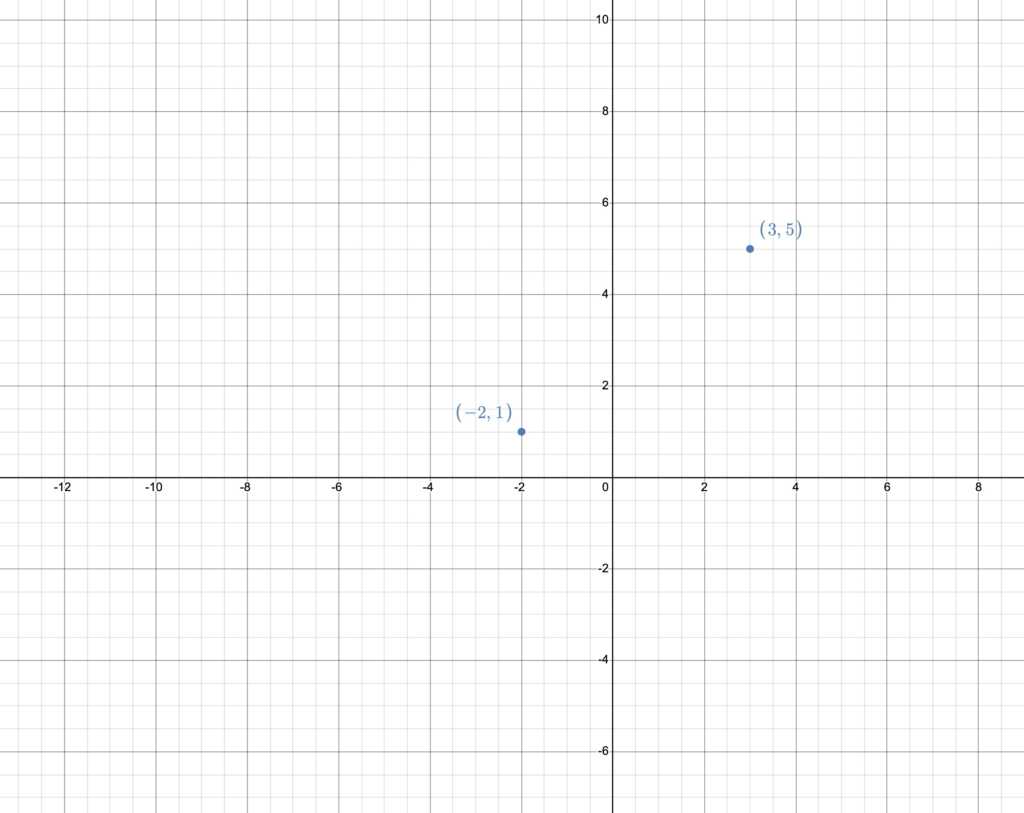Complex numbers are an area where algebraic and geometric perspectives provide very different strengths and intuitions. Having a firm grasp of both perspectives and being able to switch from one perspective to the other on-the-fly gives a much richer “big picture” of how the complex numbers work.
The algebraic perspective
“Give me a square root of -1”
We start with the real numbers $\mathbb{R}$.
We ask: What would happen if $x^2=-1$ had a solution?
We call that solution $i$.
By closing under the operations of plus and times, we obtain the complex numbers. If you like this perspective, you can build the complex numbers by the following two rules:
The idea of complex numbers
Complex numbers are the (smallest) collection of numbers satisfying:
- Every real number is a complex number. The number $i=\sqrt{-1}$ is a complex number.
- If x and y are complex numbers, then $x+y$ is a complex number and $x\cdot y$ is a complex number.
Example. Is it a complex number?
- $3+i$
- $2i+10$
- $6+10-\frac{3}{7}+8.1 +i +11$
- $\pi i$
- $6.2583$
- $2+3i+6+5i$
- $3\cdot 17 \cdot -8 \cdot i \cdot 2 \cdot i$
- $(2-1.6i)\cdot (7i-11)$
Claim. Every complex number can be represented in the form $a+bi$, where $a$ and $b$ are real numbers.
Example. Go back to the previous example and write each complex number in the form $a+bi$
Complex Numbers (algebraic definition)
Definition. The complex numbers are all numbers of the form $a+bi$, where $a$ and $b$ are real numbers and $i$ is a constant satisfying $i^2=-1$.
- Addition: If $a+bi$ and $c+di$ are complex numbers, then $(a+bi)+(c+di) = (a+c) + (b+d)i$ (we add like terms).
- Multiplication: If $a+bi$ and $c+di$ are complex numbers, then $(a+bi)\cdot (c+di) = (ac-bd)+(ad+bc)i$ (distribute, use the fact that $i^2=-1$, and collect like terms).
Example: Find the product and sum of the complex numbers $4+3i$ and $2+2i$.
The geometric perspective
“Show me how to multiply points in the plane”
We start with the coordinate plane $\mathbb{R}^2$, consisting of ordered pairs of real numbers $(x,y)$. If we want to treat points in the plane like numbers on the number line, we need to find a way to add them and multiply them.
NOTE: When we look at a point, we will also consider its size or modulus (distance from the origin) and its angle (formed with the positive $x$-axis).
NOTE – FALL 2023: The three examples below ended up taking a while, and the post-example discussion (putting the pieces together) suffered a bit. Might consider skipping the second example? But on the other hand, they seemed like they scaffolded well.
Example. Consider the points $A=(2,2)$ and $B=(3,0)$.
- Find the modulus and the angle of $A$ and the modulus and angle of $B$.
- Find $m$ the product of the moduli of $A$ and $B$, and $a$ the sum of the angles of $A$ and $B$.
- Find the point $D$ with modulus equal to $m$ and angle equal to $a$. Plot $D$ on the graph below.

Example. Consider the points $A=(2,2)$ and $B=(1,1)$.
- Find the point $C$ with x-coordinate equal to the sum of the x-coordinates of $A$ and $B$, and y-coordinate equal to the sum of the y-coordinates of $A$ and $B$. Plot $C$ on the graph below.
- Find the modulus and the angle of $A$ and the modulus and angle of $B$.
- Find $m$ the product of the moduli of $A$ and $B$, and $a$ the sum of the angles of $A$ and $B$.
- Find the point $D$ with modulus equal to $m$ and angle equal to $a$. Plot $D$ on the graph below.

Example. Consider the points $A=(3,4)$ and $B=(-2,1)$.
- Find the point $C$ with x-coordinate equal to the sum of the x-coordinates of $A$ and $B$, and y-coordinate equal to the sum of the y-coordinates of $A$ and $B$. Plot $C$ on the graph below.
- Find the modulus and the angle of $A$ and the modulus and angle of $B$.
- Find $m$ the product of the moduli of $A$ and $B$, and $a$ the sum of the angles of $A$ and $B$.
- Find the point $D$ with modulus equal to $m$ and angle equal to $a$. Plot $D$ on the graph below.

Example. Let’s go back over the last three examples. Interpret each pair of points as a pair of complex numbers, and find their sum and their product. Compare to the points $C$ and $D$ found in each case.
Complex numbers (geometric definition)
Defn. Consider points $(a,b)$ in the plane. Define the operations of addition and multiplication for points in the plane as follows:
- Addition. To add two points $(a,b)$ and $(c,d)$, we add their corresponding coordinates $(a,b) + (c,d) = (a+c, b+d)$
To multiply two points, we will multiply lengths and add angles.
- Multiplication. To multiply two points $(a,b)$ and $(c,d)$, we find the point $(p,q)$ such that the length of $(p,q)$ is the product of the lengths of $(a,b)$ and $(c,d)$, and the angle of $(p,q)$ is the sum of the angles of $(a,b)$ and $(c,d)$
- Note: $(a,b)\cdot (c,d) = (ac-bd, ad+bc)$
Shocking fact
The geometric definition of addition and multiplication for points in the plane $(a,b)$ corresponds exactly to the addition and multiplication of the corresponding complex numbers. Thus “Complex numbers are simply points in the plane nice addition and multiplication rules.”
Example: Find the product and sum of the points $R(3,4)$ and $S(5,12)$.
Here is a Desmos project where you can experiment with the sum and product of two points.






Leave a Reply